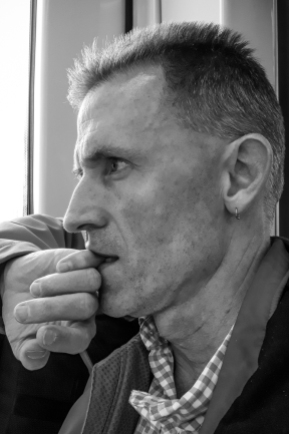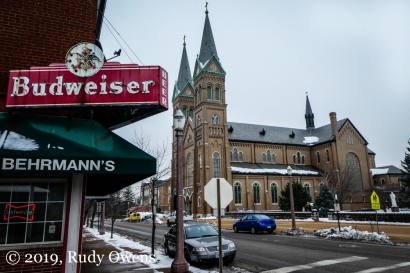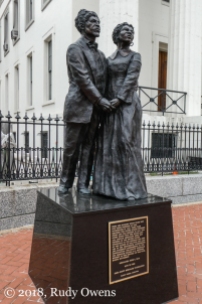(Click on each photo to see a larger picture on a separate picture page.)
I took these images of the statue of Dred Scott and his wife, Harriet Robinson Scott, and the Old Courthouse in St. Louis in April 2018. Slaves were auctioned from the courthouse steps in estate settlements prior to the U.S. Civil War. Today the courthouse is a National Park site because of its historic significance.
The courthouse also was the location of one of the nation’s most important legal cases. The Scotts brought their suit for freedom in this building in 1847, testing whether they would remain property of slaveholders or be freed. The Scotts’ quest for freedom ultimately helped to speed the divided country into Civil War, starting in 1861.
These images are fitting now because of another recent dangerous test of the United States’ democratic principles, this time by President Donald Trump. During an interview on Oct. 30, 2018, with the news site Axios, Trump claimed he could do away with birthright citizenship by executive order—in other words by dictatorial fiat. Such a move with sweep away the protections of the 14th Amendment of the United States and deny citizenship to children born of immigrants in the United States.
The 14th Amendment, ratified by Congress in 1868, granted citizenship to “all persons born or naturalized in the United States.” This included former slaves recently freed. It addressed the injustices highlighted in the famous Dred Scott case a decade earlier. It also barred states from denying citizen “life, liberty or property, without due process of law” or to “deny to any person within its jurisdiction the equal protection of the laws.”
Not only was Trump saying he could ignore the constitutional separation of powers, his gesture sought to erase a constitutional measure passed after the nation’s bloodiest war in response to the denial of citizenship and core human rights to African-Americans. Trump’s latest statement was another in a series of dangerous moves to unravel basic democratic institutions in the United States.

The Old Courthouse in St. Louis is now a popular tourist destination in downtown St. Louis, where visitors can learn about the underlying national divisions and the institution of slavery that led to the nation’s bloodiest war from 1861 to 1865.
Who Were the Scotts?
Born a slave, Scott was brought to Illinois and Minnesota, where slavery were illegal, and later to Missouri by a slaveholding surgeon. The Scotts’ first owner died and the couple were then, like property, deeded to his heirs. In 1846, Scott and Harriet Scott sued for their freedom.
In a trial held in the Old Courthouse in 1847, Scott and Harriet Scott lost their case on a technicality. During a second trial in the same building, they won their freedom in 1850, but it was also appealed by their purported owners and heirs.
In 1852, The Missouri Supreme Court overturned the 1850 decision and defended slavery itself, saying that it places “that unhappy race within the pale of civilized nations.”
The Scotts sued again in 1854 in federal court. The court upheld their right to sue, but the jury found that the Scott family members still were slaves. The Scotts’ lawyer next appealed the case to the Supreme Court of the United States.
In 1857, the nation’s highest court ruled that Dred Scott’s suit for freedom should be dismissed because African-Americans were not considered citizens. What’s more, Congress could not intervene to pass laws limiting slavery because the Constitution ensured the right of property.
The case was one of many triggering factors that erupted in the ensuing four years, culminating in the start of the Civil War after the election of Abraham Lincoln as president of the Untied States.
It is not without irony that Trump’s latest pronouncement revisited the very measure that sought to end the root injustices and moral failures of the most divisive chapter in U.S. history. My own view is that Trump intentionally seeks to sow deeper divisions and establish precedents for authoritarian power under his presidency. Disturbingly, he is doing this in the light of day and not in the shadow of war, as past presidents have done in the name of national security.
(See Dred Scott timeline here.)
























































